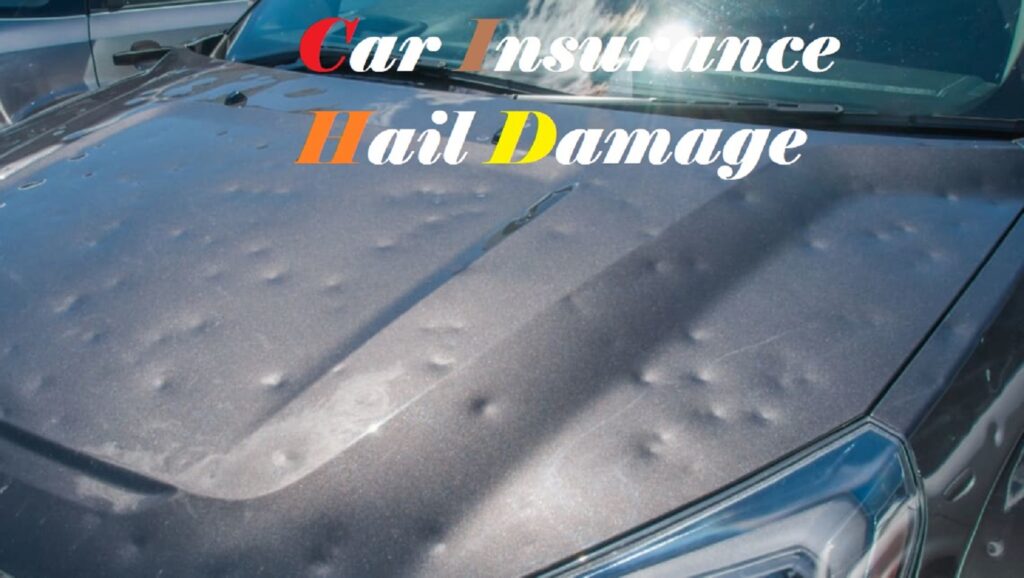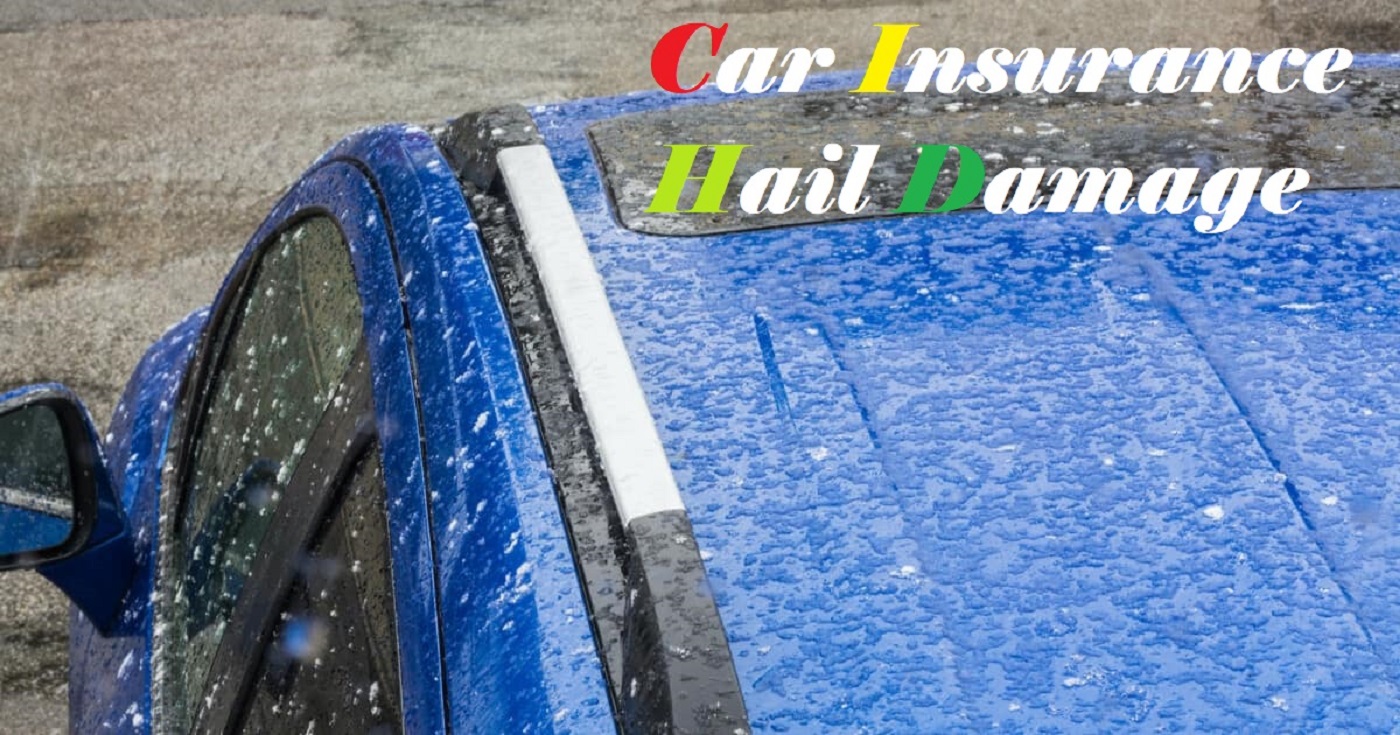Hail damage is a common problem, especially in certain parts of the country. If your car is damaged by hail, you may be wondering if your car insurance will cover the repairs. In this article, we will discuss the topic of car insurance coverage for hail damage and provide you with important information to help you understand the process.

Table of Contents
- Introduction
- Understanding Comprehensive Coverage
- How Does Car Insurance Cover Hail Damage?
- The Claims Process
- Tips for Dealing with Hail Damage
- Additional Considerations
- Conclusion
- FAQs
1. Introduction : Car Insurance Cover Hail Damage
Hailstorms can be unpredictable and cause extensive damage to vehicles. It is essential to know whether your car insurance policy covers hail damage to protect yourself financially. In this article, we will explore the coverage provided by car insurance for hail damage and guide you through the process of filing a claim.
2. Understanding Comprehensive Coverage
Comprehensive coverage is an optional type of car insurance that protects your vehicle from damage that is not caused by a collision. It provides coverage for various events, including hail damage, vandalism, theft, and falling objects. If you have comprehensive coverage, your car insurance will likely cover the cost of repairing or replacing your vehicle after you pay your deductible.
3. How Does Car Insurance Cover Hail Damage?
If your car is damaged by hail and you have comprehensive coverage, your car insurance will help pay for the repairs or the replacement of your vehicle. However, before your insurance company starts covering the costs, you will need to pay the deductible—an amount you are responsible for out of pocket. Once you have paid the deductible, your insurance company will step in and cover the remaining expenses.
The time it takes to repair hail damage varies depending on the severity of the damage. In some cases, repairs can be completed in a few days, while in others, it may take several weeks or even months. It is essential to report the claim to your insurer as soon as possible to initiate the assessment process.
4. The Claims Process
When you notice hail damage on your car, it is crucial to report the claim to your insurance company promptly. The sooner you report the claim, the quicker the insurance company can assess the damage and determine the best course of action.
If the hail damage is severe enough to render your car a total loss, your insurance company will provide you with the actual cash value of your vehicle. This value represents the worth of your car before it was damaged, minus any depreciation. With this payout, you can then purchase a new vehicle.
In cases where your car is repairable, your insurance company will cover the cost of repairs, minus your deductible. It is important to keep in mind that attempting to repair the damage yourself may void your insurance coverage. Therefore, it is best to leave the repairs to professionals recommended by your insurer.
5. Tips for Dealing with Hail Damage
Dealing with hail damage can be stressful, but following these tips can help streamline the process:
- Take pictures of the hail damage to your car as soon as possible. These pictures will serve as evidence and aid your insurance company in assessing the damage accurately.
- Refrain from attempting to repair the damage yourself, as this may void your insurance coverage. Instead, consult your insurance company and follow their recommended repair process.
- If your car is undrivable due to hail damage, check with your insurance company if you are eligible for a rental car to use during the repair period.
- Be patient throughout the claims process. Assessing the damage and determining the extent of coverage can take time, so stay in touch with your insurance company for updates.
6. Additional Considerations
While comprehensive coverage generally includes protection against hail damage, it is essential to review your policy to confirm if it covers this specific event. Not all policies are the same, and the amount of coverage can vary. Factors such as the deductible and the coverage limit will affect how much your insurance company will pay for hail damage repairs.
If you live in an area prone to hailstorms, it may be wise to consider purchasing a higher level of comprehensive coverage. Additionally, for those with newer vehicles, a deductible waiver may be worth considering. This option eliminates the need to pay a deductible if your car sustains hail damage.
If you are uncertain about the details of your car insurance coverage, you can refer to your policy documents or contact your insurance agent for clarification.
7. Conclusion
In conclusion, car insurance can indeed cover hail damage if you have comprehensive coverage. This type of coverage protects your vehicle from non-collision-related damage, including hailstorms. When hail damage occurs, promptly report the claim to your insurance company, providing them with necessary evidence such as pictures of the damage. From there, your insurer will assess the damage and determine the appropriate course of action, whether it involves repairing the vehicle or providing a pay-out for a total loss.
Here are some insurance companies who provide hail damage and car insurance coverage with their website addresses:
- Allstate | https://www.allstate.com/: https://www.allstate.com/
- State Farm | https://www.statefarm.com/: https://www.statefarm.com/
- Geico | https://www.geico.com/: https://www.geico.com/
- USAA | https://www.usaa.com/: https://www.usaa.com/
- Nationwide | https://www.nationwide.com/: https://www.nationwide.com/
- Amica | https://www.amica.com/: https://www.amica.com/
These are just a few of the many insurance companies that offer hail damage and car insurance coverage. It is important to compare quotes from different companies to find the best coverage for your needs and budget.
8. FAQs
Q1: What is comprehensive coverage? Comprehensive coverage is an optional type of car insurance that provides protection for your vehicle against damage not caused by a collision. It covers events such as hail damage, theft, vandalism, and falling objects.
Q2: Will my car insurance cover hail damage? If you have comprehensive coverage on your car insurance policy, your insurer will likely cover the cost of repairing or replacing your vehicle after you pay your deductible. It is important to review your policy or contact your insurance company to confirm coverage for hail damage.
Q3: How long does it take to repair hail damage? The time required to repair hail damage varies depending on the severity of the damage. In some cases, repairs can be completed within a few days, while more extensive damage may take several weeks or even months to repair.
Q4: Can I repair hail damage myself? It is generally recommended not to repair hail damage yourself, as this could void your insurance coverage. It is best to consult your insurance company and follow their recommended repair process.
Q5: What should I do if my car is not drivable due to hail damage? If your car is undrivable due to hail damage, check with your insurance company if you are eligible for a rental car. They may provide you with a temporary replacement vehicle to use while your car is being repaired.
“Additionally, for more insightful articles and information on various topics, you can visit the informative website www.thefingain.com. It offers a wide range of articles and resources to expand your knowledge and explore diverse subjects.”
Car Insurance Cover Hail Damage WNE Jaliwale Car Protection Cover Roof and Bonnet



We are thrilled to invite you to participate in the exclusive testing phase of our groundbreaking SEO Neural Network. Designed as your reliable companion in the world of search engine optimization, our platform offers automatic creation of semantic cores in eight languages.
Key Features:
Automatic generation of semantic cores and website structures.
Keyword clustering for maximum visibility in search engines.
Global reach with support for 17 languages.
Join us in exploring how our advanced technology can enhance your online presence and drive your business to new heights in search rankings.
We look forward to having you on board
Juice Bar Professional Company
Select our juice bar professional company for trustworthy structure and restoration services. We build and upgrade shops to produce inviting spaces for your customers.
Casino is not just a game of luck; it’s a thrilling challenge that can be mastered with the right strategy. Imagine the excitement of hitting 21 and beating the dealer with confidence. Whether you’re a novice or an experienced player, learning casino bonus money online no deposit bonus can transform your gaming experience and lead to significant wins. Don’t miss out on the opportunity to improve your skills and enjoy the rewards. Start playing blackjack today and take the first step towards becoming a pro!
It is unbelievable
Over 200 thousand people have been killed in Gaza, of which 50 thousand are under the rubbles, 25,897 are wemens and 26,987 are kids and infants.
There has never been a war in history where 80% of the country has been destroyed, 100% of the population displaced and 50% of the deaths children
Call it what it is
GENOCIDE
https://www.youtube.com/shorts/IrX9v6DKH1g
see why Israel can kill innocent children with American taxpayer money
1- see Why Israel is in deep trouble
https://www.youtube.com/watch?v=kAfIYtpcBxo
2- Because the God of Money of our World is a Jew who supports and lives in Israel. For more details, click on the following link.
https://mega.nz/file/FqhzGKbB#bsX4PD-O59HEA0-rynD29xkk47dmddycY5CjZfoDLYg
3- Because what USA president say about Israel https://www.tiktok.com/@thefearlessqueenmel/video/7307640994579680542?lang=en&q=why%20dont%20Americans%20knowl%20what%20you%20have%20seen%20&t=1701880206555
See how innocent children are killed by the most powerful Israeli using American bombs at
Al Jazeera Arabic Live
at
https://www.youtube.com/watch?v=bNyUyrR0PHo
if you do not do something such as going on the street and telling your government which is controlled by the Jews to stop killing the Gaza people and stop the Israeli War and send food to the starving people of Gaza. If you can not do it then forward this message with the above two links to at least 4 of your friends and ask them to forward it to 4 of their friends so that the world will know that the new mass murderers are the Jews of the world . It is ironic that the Holocaust servicers (the Jews) are creating a new Holocaust against the Philistines in Gaza.
if you do not do this also then you do not have a HART
our website, we offer modern and the a- IT solutions an eye to your business] kodx.uk
Solve Equipment Vibration Issues Easily!
Discover the Balanset-1A – a portable balancer and vibration analyzer perfect for farmers, machinery owners, and professionals.
Compact, precise, and easy to use.
See the kit on Allegro.
dynamic balancing
The concept of dynamic balancing plays a crucial role in the efficiency and longevity of rotating machinery. Dynamic balancing is essential in industries that rely on the smooth operation of various types of equipment, including fans, turbines, centrifuges, and other rotating shafts. It involves assessing and correcting the imbalances that occur when a rotor is in motion, ensuring that the forces acting on the machinery are evenly distributed. This process significantly reduces vibrations, which can lead to wear and tear, noise, and ultimately equipment failure if not addressed.
The significance of dynamic balancing can be understood better when compared to static balancing. Static imbalance occurs when the center of mass of a stationary rotor does not align with its axis of rotation, causing the rotor to tend to rotate with its heavier side down. This type of imbalance can be addressed by adding or removing mass in specific locations on the rotor. However, static balancing is limited to situations where the rotor is not rotating and is less complex compared to dynamic balancing.
Dynamic imbalance, on the other hand, occurs in a rotating system where the mass distribution is uneven in multiple planes. This imbalance leads to a situation where two different mass displacements create centrifugal forces that do not cancel each other out, resulting in vibrations. Correcting dynamic imbalance is more complex as it requires the use of specialized equipment, such as a vibration analyzer, to measure the vibrations and determine the corrective actions needed.
The process of dynamic shaft balancing is typically conducted using devices like the Balanset-1A, which is designed for dynamic balancing in two planes. This versatile tool is capable of handling a variety of rotors, making it indispensable in many industrial applications. To initiate the dynamic balancing process, operators first measure the initial vibrations of the rotor using connected vibration sensors, establishing a baseline for subsequent adjustments.
Once the initial vibration data is collected, a calibration weight is added to the rotor, and the effect of this weight on vibration levels is measured. This information is critical for understanding how weight distribution changes impact the rotor’s performance. Moving the calibration weight to different locations allows operators to identify the most effective points for corrective weight installation.
The final corrective weights are then determined based on comprehensive measurements taken during the balancing process. By installing these weights at specified angles on the rotor, operators can reduce the vibrations to acceptable levels, achieved through precise calculations of angles and masses required for balancing. The effectiveness of this process is validated through post-installation vibration measurements.
An integral part of dynamic balancing involves the careful measurement of angles to correctly position corrective weights. Operators must account for the direction of rotor rotation, and the specific placement of trial weights significantly impacts the balancing outcome. Detailed calculations ensure that the corrective weights effectively counteract any imbalance present during operation.
Dynamic balancing procedures often include multi-plane assessments where both vertical and horizontal measurements are taken. The accuracy of these measurements is paramount, as even slight deviations can lead to further issues down the line. By methodically installing vibration sensors and ensuring they are securely affixed, operators can achieve reliable readings during each phase of the balancing process.
Portable balanced systems like Balanset-1A emphasize the importance of portability in dynamic balancing operations, allowing technicians to perform assessments and corrections on-site rather than relying on fixed balancing stations. This flexibility improves efficiency and responsiveness in addressing dynamic imbalances in various machine setups, especially in complex industrial environments.
Ultimately, the goal of dynamic balancing is to enhance the performance and reliability of machinery. By effectively managing imbalances, businesses can reduce maintenance costs and minimize downtime caused by vibrations and related issues. Understanding the principles of dynamic balancing allows industries to run more smoothly, with equipment operating within designated vibration limits.
The comprehensive approach to dynamic balancing not only involves identifying points of imbalance but also encompasses an understanding of how those imbalances create complications in machinery operation. By employing advanced tools for analysis and corrective measures, industries can foster longevity in their equipment and optimize their operational capabilities.
In summary, dynamic balancing is a pivotal technique that assists in maintaining the operational efficiency of rotating machinery. By differentiating between static and dynamic imbalances, and utilizing sophisticated balancing devices, industries can ensure smoother operations, extend machinery lifespan, and improve overall productivity. Organizations that prioritize dynamic balancing stand to gain significant advantages, not just in terms of machine reliability, but also in cost savings and operational efficacy in their processes.
https://enrollbookmarks.com/story16827033/balanset-revolutionizing-dynamic-balancing
https://albertom814xkw1.plpwiki.com/user
https://gratis-directory.com/listings12673553/vibromera-leading-in-balancing-and-vibration-analysis
Stay up to date with the latest game reviews on ljshopch.com. We share impressions, analyze gameplay, and highlight the strengths and weaknesses of new releases.
Find useful game guides and tips on LJShopch. Learn how to tackle difficult levels, understand game mechanics, and discover hidden features.
accutane skin care products cost of accutane treatment side effects of stopping accutane will my insurance cover accutane long term side effects of accutane in men
Casino is not just a game of luck; it’s a thrilling challenge that can be mastered with the right strategy. Imagine the excitement of hitting 21 and beating the dealer with confidence. Whether you’re a novice or an experienced player, learning online slot jackpots can transform your gaming experience and lead to significant wins. Don’t miss out on the opportunity to improve your skills and enjoy the rewards. Start playing blackjack today and take the first step towards becoming a pro!